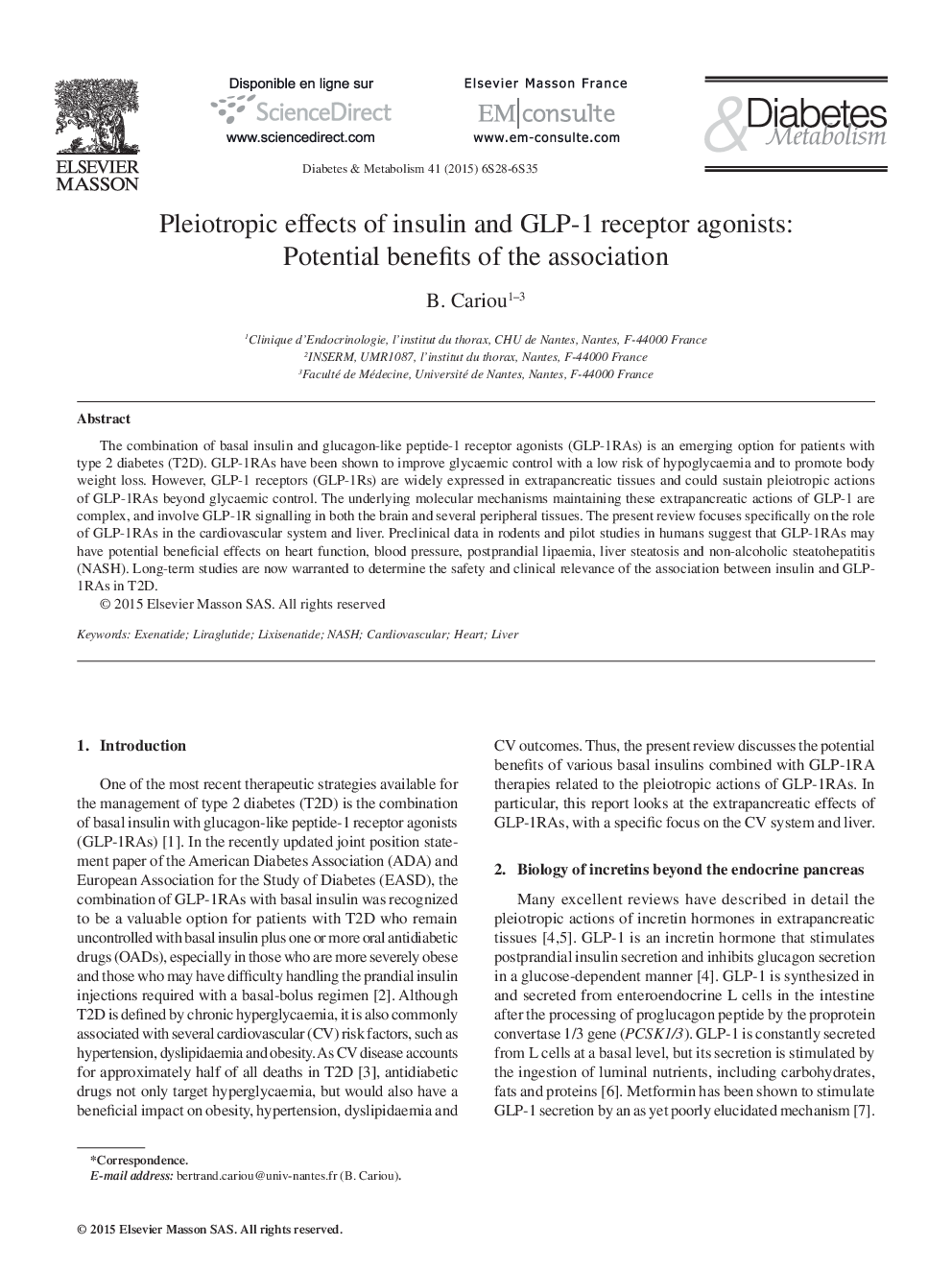| Article ID | Journal | Published Year | Pages | File Type |
|---|---|---|---|---|
| 3259089 | Diabetes & Metabolism | 2015 | 30 Pages |
The combination of basal insulin and glucagon-like peptide-1 receptor agonists (GLP-1RAs) is an emerging option for patients with type 2 diabetes (T2D). GLP-1RAs have been shown to improve glycaemic control with a low risk of hypoglycaemia and to promote body weight loss. However, GLP-1 receptors (GLP-1Rs) are widely expressed in extrapancreatic tissues and could sustain pleiotropic actions of GLP-1RAs beyond glycaemic control. The underlying molecular mechanisms maintaining these extrapancreatic actions of GLP-1 are complex, and involve GLP-1R signalling in both the brain and several peripheral tissues. The present review focuses specifically on the role of GLP-1RAs in the cardiovascular system and liver. Preclinical data in rodents and pilot studies in humans suggest that GLP-1RAs may have potential beneficial effects on heart function, blood pressure, postprandial lipaemia, liver steatosis and non-alcoholic steatohepatitis (NASH). Long-term studies are now warranted to determine the safety and clinical relevance of the association between insulin and GLP-1RAs in T2D.
